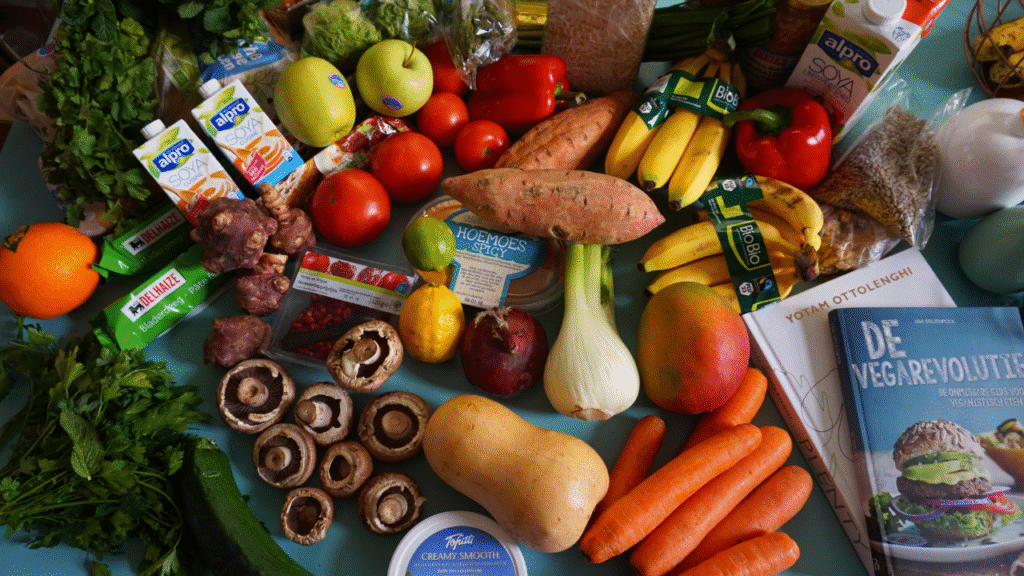How to Save Money on Groceries Every Month: Smart Strategies for Every Home
Jun 14, 2025 | By Team SR

Groceries are among the largest regular expenses for most households. With prices going up consistently, many families are looking for effective ways to cut their monthly grocery costs without sacrificing quality or nutrition. The good news is—saving money on groceries is highly doable with a bit of planning, self-discipline, and wise shopping methods.
Here are the steps to follow in order to reduce your grocery budget every month:
1. Plan Your Meals Ahead
Meal planning is the best way to stick to your grocery budget. Begin every week by making a meal plan consisting of breakfast, lunch, dinner, and snacks. Pre-planning lets you know exactly what ingredients you need and prevents impulse purchases or food wastage.
Add cheap, healthy ingredients such as beans, rice, lentils, pasta, and vegetables in season. Repurpose ingredients from one meal to the next to save even more—grilled chicken, for instance, can be utilized in salads, wraps, and pasta.
2. Make a Grocery List (And Stay to It)
After you've organized your meals, create a comprehensive grocery list. Walk through your fridge and pantry to see what you already possess. Next, only write down what you need to purchase. Adhering to this list prevents you from purchasing extra things that will inflate your overall cost in no time.
Tip: Never shop for groceries on an empty stomach. Hunger tends to make you impulse buy and get more than you require.
3. Shop Sales and Use Coupons
Make the most of weekly sales, store circulars, loyalty cards, and coupon apps. Most supermarkets discount popular commodities, offer buy-one-get-one promotions, or members-only special offers. Subscribe to newsletters or install store apps to receive notification of discounts.
You can also look up websites such as Linkhouse, which occasionally expose money-saving opportunities or budget-friendly resources to better manage household budgets.
4. Purchase Store Brands and Generic
Store-brand or generic products are usually as good as name brands, but much less expensive. For instance, simple pantry essentials such as flour, sugar, pasta, and canned vegetables provide excellent savings if purchased as store brands.
Shop by price per unit (e.g., per liter or ounce) to get the best value, and don't believe that expensive automatically equals quality.
5. Buy in Bulk (But Thoughtfully)
Buying in bulk can pay a great deal in the long run—particularly for non-perishables such as rice, pasta, canned foods, or frozen veggies. Just avoid purchasing in bulk for the sake of it. Purchase only what you're certain that your household will consume prior to its expiration date.
Warehouse clubs or bulk stores tend to provide the greatest value, but price shop beforehand before joining up.
6. Prepare Meals at Home and Restrict Takeout
One of the largest expenses for a grocery budget is often eating takeout or dining out. Preparing meals in your home not only reduces spending but also enables you to prepare healthier options. Batch cooking and freezing food can save time and provide you with a constant source of something ready to eat.
Make bulk portions and save leftovers for tomorrow's lunch—this easy habit alone can slash your monthly grocery bill in half.
7. Don't Waste Food
Food waste is throwing money away. Properly store perishables, freeze foods you won't consume in the near future, and monitor expiration dates. Get creative with leftovers by making soups, casseroles, or sandwiches out of them.
Being aware of what's already in your fridge before heading out to shop prevents overbuying and food waste.
Conclusion
Savvy shopping for groceries doesn't require sacrificing quality and nutrition. With prudent planning, savvy shopping, and a few simple habit modifications, you can considerably reduce your monthly grocery bill. Make small changes, remain steady, and see your savings accumulate every month.


 Follow us
Follow us Follow us
Follow us











